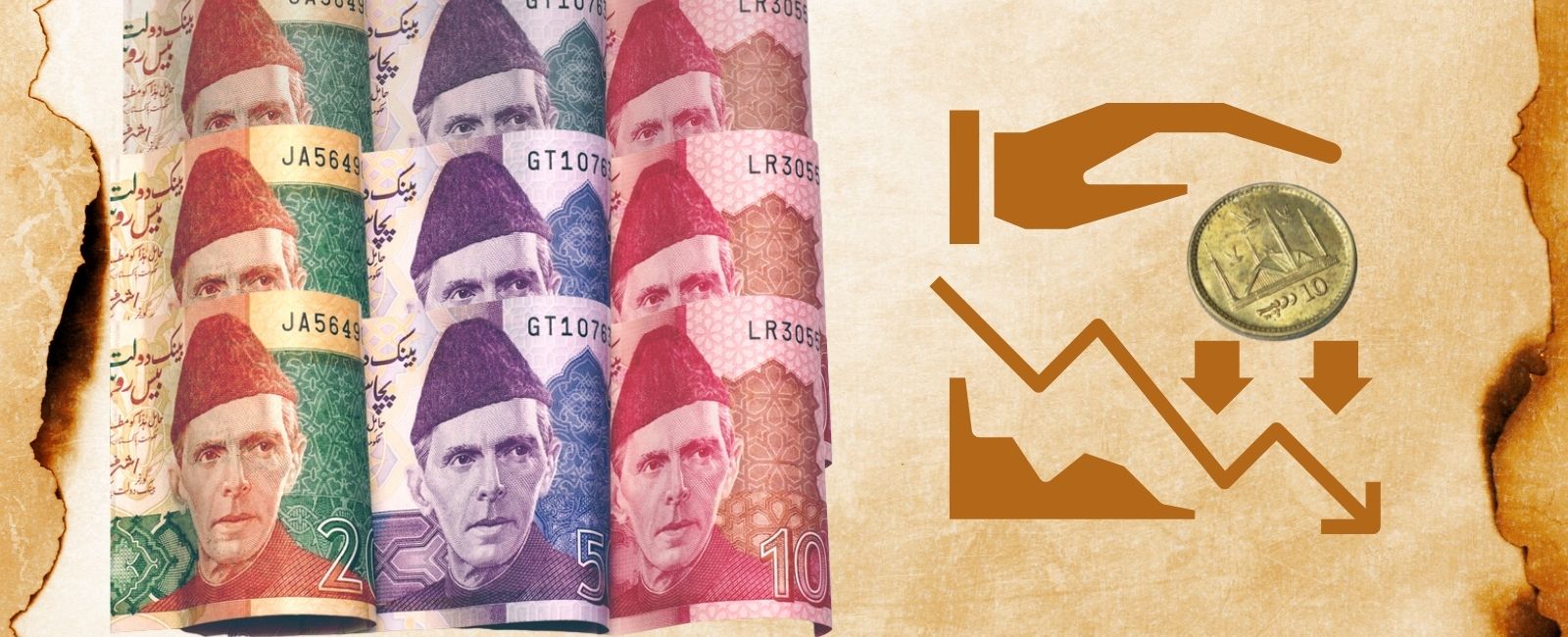From 160 to 178: A look at the turbulent journey of the Pakistani rupee in 2021
Financial experts believe that the local currency will slightly depreciate within the range of 3-5% against the greenback in 2022

KARACHI: Amid high exchange rate volatility, the Pakistani rupee lost over 10% (or Rs16.68) of its total value during 2021, with the local unit’s slide worsening during the second half of the year.
On Friday — the last day of the year — the dollar traded at Rs176.51 compared to Rs159.97 on January 4, translating to a total depreciation of 10.43% in 2021.
The massive devaluation of the rupee can mainly be attributed to the widening current account deficit and ever-increasing import bills.
During the outgoing calendar year, the government failed to reduce the import bill and bring the current account deficit into a surplus. Although the country’s reserves improved, the collective impact resulted in exchange rate fluctuations.
Sana Tawfik, an economist at Arif Habib Limited, told Geo.tv that 2021 was a “rollercoaster ride” for the rupee's parity against the dollar.
“During 2021, the local currency lost over 10% of its value against the greenback, compared to 3% in 2020,” she highlighted.
The economist added that although it is fairly difficult to assess what factors (domestic and external) have contributed more towards the depreciation over the period but in her view, the current slide in rupee was witnessed owing to deterioration in the balance of payments.
“This was due to higher than expected current account deficit on the back of burgeoning import bill towards the end of the year 2021,” she said, noting that in addition to this unwarranted circumstance, speculative activities picked up in the latter half of the year, causing the rupee to fall dramatically against the US dollar.
It is pertinent to mention here that Bloomberg earlier reported that during the outgoing year the Pakistani rupee had become the worst-performing currency in Asia compared to its status as the world’s best performer earlier during the start of 2021.
Shedding light on the impact of the International Monetary Fund (IMF) programme, Tawfik said: “Moreover, the uncertainty on the approval of IMF’s sixth review added to the overall weakening of the rupee.”
Meanwhile, Pakistan-Kuwait Investment Company Head of Research Samiullah Tariq said in 2021, the Pakistani rupee lost approximately 11% against the US dollar, sliding from Rs160 to Rs178.
“The local currency depreciated from a high of Rs152 during May to Rs178 recorded during December as Pakistan ran a current account deficit of $7 billion for 5MFY22,” he said, adding that the exchange rate is now market-determined, whereby foreign reserves are not used to defend the currency.
The analyst added that this depreciation now works like a “shock absorber” as higher exchange rate parity cools down imports and encourages exports.
The rupee hit an all-time low of Rs178.24 on December 29 on the back of a mammoth import bill for November and widened the current account deficit.
Later, the rupee recovered to Rs176.51 during the last two sessions of the outgoing year following a suspected intervention by the central bank, while the cabinet's approval of a supplementary finance bill to secure funding from the IMF also helped boost sentiment.
Outlook for 2022
Sharing their takes on the outlook for the year ahead, Tawfik said that over the next few quarters, the base case foreign exchange reserves outlook is less pessimistic with 5% annual depreciation than was initially feared.
“We believe, with clarity on the IMF front, slowdown-to-decline in overall international commodity prices, measures taken by the central bank to curb speculation and better flows expected going forward (IMF tranche, International Sukuk etc), the rupee will close the fiscal year 2021-22 at Rs178 against the greenback and at Rs183 by December 2022,” she said.
Tariq said: “For 2022, I believe the rupee should depreciate by 3-4% due to the inflation differential. The steps taken by the government including a higher interest rate, clamp down on car financing along with rupee depreciation, and waning of pent up demand should help control imports.”
Analysts believe that the local unit will likely remain stable and may also appreciate given that the Real Effective Exchange Rate (REER) remains below 100.




